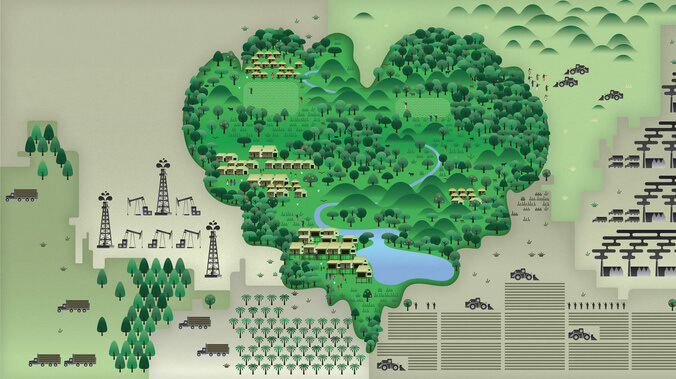
by DGR Colorado Plateau | Oct 7, 2015 | Indigenous Autonomy, The Solution: Resistance
By Intercontinental Cry
Territories of Life is a video toolkit with a purpose. It’s aim: to bring stories of resistance, resilience and hope to indigenous communities on the frontline of the global rush for land.
Produced by our friends at LifeMosaic, a non-profit based in Scotland, the Territories of Life toolkit consists of ten stories that were filmed in communities across Indonesia, Philippines, Guatemala, Ecuador, Colombia, Paraguay, Tanzania and Cameroon.

“The videos in the Territories of Life toolkit share inspirational stories of communities that are successfully organizing to defend their territories and their futures,” reads a press release from LifeMosaic. They include “The story of Maasai indigenous women in Tanzania who used awareness raising, protests and political pressure to lead a movement in defense of their territory; and the Misak indigenous people in Colombia who have developed and are carrying out their Plan de Vida, a long‐term vision for self-determined development.”
The toolkit also includes a few primers on land rights, land grabs, and common tactics that companies use to convince communities to accept and support their projects.
LifeMosaic goes on to say that, “The video toolkit and accompanying facilitators’ guide are intended to support indigenous peoples as they exercise their right to free, prior and informed consent; advocate for their rights; participate more actively in local spatial planning; and draw up village action plans for self‐determined development and for protecting their territories, forests and resources.”
It’s more than mere lip service. LifeMosaic is actively working with hundreds of local partners to facilitate the free distribution of Territories of Life to indigenous communities and supporting organizations around the world.
To order a copy of the toolkit, visit www.lifemosaic.net. If other groups request a DVD, LifeMosaic recommends a donation of $11 (£10). The videos can also be downloaded online at their website.
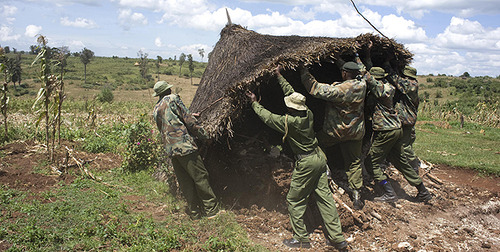
by Deep Green Resistance News Service | Feb 7, 2015 | Colonialism & Conquest, Indigenous Autonomy
By Stephen Corry / Survival International
Twenty years ago, fundraising publicity for the World Wildlife Fund (WWF) posed a very odd question: whether to send in the army or an anthropologist to stop indigenous people destroying the Amazon rainforest. Equally bizarre, it claimed that the media was “inundated with appeals to save native peoples” and asked, “Do they really deserve our support?” The world’s leading conservation organization went on by saying that tribes had learned many things from outsiders, including “greed and corruption.” WWF’s answer to this apparent dilemma was thankfully not the army, but for concerned people to give it more money (its daily income is now $2 million) so it could “work with native peoples to develop conservation techniques.”
At Survival International, we were dismayed, and so were tribal organizations when we showed them the advertisement. For WWF to blame “duped” tribespeople for deforestation was serious enough (giving the impression they trumped conservationists in attracting more funding was laughable), but even mentioning soldiers in the same sentence as conservationists uncomfortably echoed the latter’s dubious roots in colonialist ideology.
However, WWF’s assertions are likely to have raised more eyebrows with its supporters than with many tribal people, for whom big conservation organizations have long been considered in the same bracket as development banks, road and dam builders, miners and loggers. All, they would say, are outsiders bent on stealing tribal lands.
Over the last 20 years, some conservation groups have at least cleaned up their language: Their policies now make claims about working in partnership with local tribal communities, about consulting them and about how much they apparently support UN standards on indigenous rights. There are undoubtedly many in the conservation industry who believe all this, and who realize that tribal peoples are – as a broad principle – just as good conservationists as anyone else, if not considerably better.
Even those who disagree do at least recognize that alienating local people – whether tribal or not – eventually leads to protected areas being opposed and attacked. It’s one reason why the conservation industry makes much, at least on paper, of bringing local communities on board. But apart from written policies, how much have things really changed in the last 20 years? Tragically for many, the answer is “not much”; in some places, they’re getting worse.
“Voluntary Relocation” From Tiger Reserves
For example, the WWF-inspired tiger reserves in India are increasingly used to expel tribes from their forests so they can be opened up to tourism. The people are bribed with a fistful of rupees to give up the land, which has sustained their families for countless generations. More often than not, promises are broken and they’re left with empty pockets and a few plastic sheets for shelter. Whether any financial incentives materialize or not, they are backed up with threats and intimidation: Tribes are repeatedly told that if they don’t get out, their homes and crops will be destroyed and they’ll get nothing. When they finally cave in to this pressure, the conservationists call it “voluntary relocation.” Needless to say, it’s illegal.
It might surprise people to know there’s evidence that tigers thrive in the zones where tribal villages remain – the people’s small open fields encourage more tiger prey than in the enclosed forest. When they’re kicked out, their old clearings give way to roads, hotels and truckfuls of gawping tourists. Studies show animal stress behavior increases with tourism. In other words, if you want happy tigers, then it’s much better to leave the tribal people where they’ve always been. They are surely the best eyes and ears to report any poaching activity anyway; Baiga villagers from the famous Kanha reserve respect the big cats as their “little brothers.”
Hunters or Poachers?
Guards in tiger reserves intimidate and beat tribespeople found on land that was once their ancestral forests. But at least they stop short of the torture to which the Baka “Pygmy” people in Cameroon are subjected by anti-poaching forces. To return to the advertisement: Conservation is sending in soldiers, just as it always has. Heavily armed, government paramilitary squads accompany “ecoguards,” which are equipped using WWF funds. They beat those thought to have entered the protected areas, which are in fact Baka ancestral homelands. Tribespeople are assaulted even if they’re merely suspected of knowing those who have gone in. Meanwhile, their land is logged and mined, including by WWF partners. A Baka man told us, “They beat us at the WWF base. I nearly died.” WWF seems incapable of stopping these abuses. It has known about them for years, but is scathing about those who denounce them: Survival’s “absurd” campaign to draw attention to them would, it claimed, help the “real” criminals.
Tribal victims are invariably accused of “poaching,” a term which now means any sort of hunting, including for food, with which conservationists disagree. That certainly doesn’t encompass all hunting. Many conservation organizations, including WWF, don’t oppose fee-paying big game hunting. On the contrary, they profit from it, even quietly whispering that it’s a vital ingredient in conservation.
Senior environmentalists are not averse to having a shot themselves. The former president of WWF-Spain – the previous king of Spain – was recently photographed in Botswana with his elephant kill. The resulting scandal forced him to step down, but only because the picture was leaked. Kings can hunt elephants, which we’re told are threatened, but Bushmen can’t hunt to eat, not a single one of the plentiful antelope they’ve lived off sustainably since time immemorial. If they’re even suspected of it, they’ll be beaten and tortured like the Baka. This has been going on for decades, as the president of Botswana, Ian Khama, has tried to force all Bushmen out of their Central Kalahari region. In 2014, he banned hunting throughout the country – except for paid safari hunting of course. It was another illegal act in the guise of conservation.
Conservation and Diamond Mining
An avid environmentalist himself, and board member of Conservation International (CI) no less, General Khama claims he wants to clear the zone so that the wildlife will be undisturbed. This is decidedly odd because the fauna has been much disturbed over the last 20 years, but not by the remaining tribespeople: Mining exploration continues apace and you will soon be able to buy a diamond mined from inside the so-called game reserve. Due to go on sale around Valentine’s Day, these expensive love tokens now play a part in the destruction of the last hunting Bushmen in Africa.
In March, Khama is due to host the second United for Wildlife meeting – a consortium of the world’s major conservation organizations, including WWF and CI. A British royal will doubtless turn up and join the cry against “illegal poaching.” The assembly of conservationists, who routinely violate the law in their treatment of tribal peoples, will be hosted by a president guilty of trying to eradicate Bushmen hunters. No doubt the hypocrisy will be lost in the sanctimoniousness with which the press will accord the photo ops. The first United for Wildlife meeting, in London, was also hosted by Princes William and Harry – both had returned the previous day from hunting in Spain.
A couple of years ago, to the southwest of the Central Kalahari Game Reserve diamond mine, another Bushmen community was going to be thrown off their land because they had the temerity to remain where CI had tried to establish a new “wildlife corridor.” CI apparently has good policies, including having to consult the locals, so Survival International asked how it went about consulting with the Bushmen of Ranyane during its long, expensive Botswana study. Although the village is an easy four-hour drive from the nearest big town, CI admitted there had been no attempt to consult at all.
Conservation as a Feel-Good Commodity
If this handful of examples surprises anyone, it’s because the industry has poured enormous resources into gaining a place among the world’s most trusted brands. This long PR exercise has involved blurring and hiding (rather than honestly confronting) conservation’s colonial, indeed racist, past. Conservation has become a commodity, raising enormous sums of money, and rewarding supporters with an equally large feel-good factor, one that is nowhere near as straightforwardly apolitical as we are led to believe. Those who suggest “conservation” might not really be as holy as some claim are routinely denigrated as blasphemers and apostates.
If the movement is to have any chance of achieving its stated objectives – which I, for one, pray it will – it’s vital that it’s scrutinized, questioned and exposed: For conservation casts an ideological opposition of nature versus people that is profoundly damaging to our real relationship with our environment. By doing so, it harms both people and ultimately the environment, too; conservation destroys those who’ve nurtured their surroundings for timeless generations – people who have actually fashioned what we now mistake as natural. It works too often in direct opposition to its own goals.
When experts and researchers point this out, and criticize the industry, its common reaction is to try and silence them. For example, when award-winning German filmmaker and journalist, Wilfried Huismann, conducted a two-year investigation into the WWF, the film he produced, The Silence of the Pandas, was initially blocked through legal injunctions. You can read his book, PandaLeaks, though you won’t find it in mainstream bookstores. WWF’s legal team is very quick off the mark.
But many critics are committed environmentalists themselves. They too want to prevent the world’s most beautiful and diverse regions from being overrun by the industrialization that has destroyed so much and reduced so many people to poverty and dependency. The problem is that the conservation industry is not only failing to achieve this; it can be working in the opposite direction. According to Huismann, WWF is turning a blind eye to the destruction of huge areas in Southeast Asia and South America for biofuel cultivation, requiring millions of gallons of toxic pesticides and herbicides.
Tribal Peoples Are the Best Conservationists
If the conservation conglomerates really are to start preventing the further industrialization of these vital ecosystems, they surely must first remove giant polluters like Monsanto and BP from their own boards. Conservation has to stop the illegal eviction of tribal peoples from their ancestral homelands. It has to stop claiming tribal lands are wildernesses when they’ve been managed and shaped by tribal communities for millennia. It has to stop accusing tribespeople of poaching when they hunt to feed their families. It has to stop the hypocrisy in which tribal people face arrest and beatings, torture and death, while fee-paying big game hunters are actively encouraged.
The WWF publicity concluded, “Enough is enough” – I agree; it’s time for change. It’s obviously too late for those peoples whom conservation has killed, but what’s still going on today is illegal, immoral and does not deserve public support. Conservation has to wake up to the fact that tribal peoples are better at looking after their environment than anyone else.
Despite the millions pouring into the conservation industry daily, the environment remains in deepening crisis. It’s time to realize that there is a better way. Firstly, tribal rights have to be acknowledged and respected – are they not people too? Secondly, they have to be treated as the best experts at defending their own land. Thirdly, conservationists must realize it’s they, themselves, who are the junior partners here, not the tribespeople.
The real creators of the world’s national parks are not the ideologues and evangelists of the environmental movement, but the tribal peoples who fashioned their landscapes with knowledge and understanding accumulated over countless generations.
From TruthOut: http://www.truth-out.org/news/item/28888-wildlife-conservation-efforts-are-violating-tribal-peoples-rights
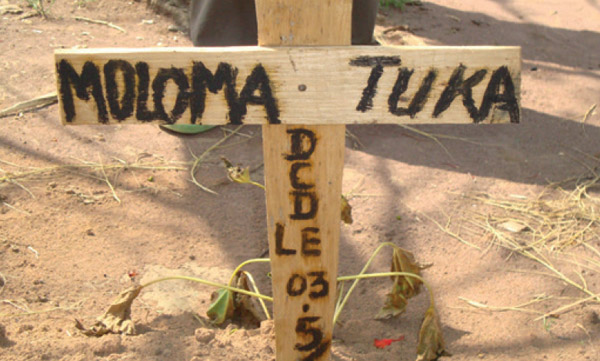
by DGR News Service | Apr 21, 2014 | Repression at Home
By Jeremy Hance / Mongabay
At least 908 people were murdered for taking a stand to defend the environment between 2002 and 2013, according to a new report today from Global Witness, which shows a dramatic uptick in the murder rate during the past four years. Notably, the report appears on the same day that another NGO, Survival International, released a video of a gunman terrorizing a Guarani indigenous community in Brazil, which has recently resettled on land taken from them by ranchers decades ago. According to the report, nearly half of the murders over the last decade occurred in Brazil—448 in all—and over two-thirds—661—involved land conflict.
“There can be few starker or more obvious symptoms of the global environmental crisis than a dramatic upturn in killings of ordinary people defending rights to their land or environment,” said Oliver Courtney of Global Witness. “Yet this rapidly worsening problem is going largely unnoticed, and those responsible almost always get away with it. We hope our findings will act as the wake-up call that national governments and the international community clearly need.”
But as grisly as the report is, it’s likely a major underestimation of the issue. The report covers just 35 countries where violence against environmental activists remains an issue, but leaves out a number of major countries where environmental-related murders are likely occurring but with scant reporting.
“Because of the live, under-recognized nature of this problem, an exhaustive global analysis of the situation is not possible,” reads the report. “For example, African countries such as Nigeria, Democratic Republic of Congo, Central African Republic and Zimbabwe that are enduring resource-fueled unrest are highly likely to be affected, but information is almost impossible to gain without detailed field investigations.”
In fact, reports of hundreds of additional killings in countries like Ethiopia, Myanmar, Venezuela, and Zimbabwe were left out due to lack of rigorous information.
Even without these countries included, the number of environmental activists killed nearly approaches the number of journalists murdered during the same period—913—an issue that gets much more press. Environmental activists most at risk are people fighting specific industries.
“Many of those facing threats are ordinary people opposing land grabs, mining operations and the industrial timber trade, often forced from their homes and severely threatened by environmental devastation,” reads the report. “Indigenous communities are particularly hard hit. In many cases, their land rights are not recognized by law or in practice, leaving them open to exploitation by powerful economic interests who brand them as ‘anti-development’.”
As if to highlight these points, Survival International released a video today that the groups says shows a gunman firing at the Pyelito Kuê community of Guarani indigenous people. The incident injured one woman, according to the group. The Guarani have been campaigning for decades to have land returned to them that has been taken by ranchers.
“This video gives a brief glimpse of what the Guarani endure month after month—harassment, intimidation, and sometimes murder, just for trying to live in peace on tiny fractions of the ancestral land that was once stolen from them,” the director of Survival International, Stephen Corry, said. “Is it too much to expect the Brazilian authorities, given the billions they’re spending on the World Cup, to sort this problem out once and for all, rather than let the Indians’ misery continue?”
According to the report, two major drivers of repeated violence against environmental activists are a lack of attention to the issue and widespread impunity for perpetrators. In fact, Global Witness found that only ten people have been convicted for the 908 murders documented in the report, meaning a conviction rate of just 1.1 percent to date.
“Environmental human rights defenders work to ensure that we live in an environment that enables us to enjoy our basic rights, including rights to life and health,” John Knox, UN Independent Expert on Human Rights and the Environment said. “The international community must do more to protect them from the violence and harassment they face as a result.”
From Mongabay: “Nearly a thousand environmental activists murdered since 2002“
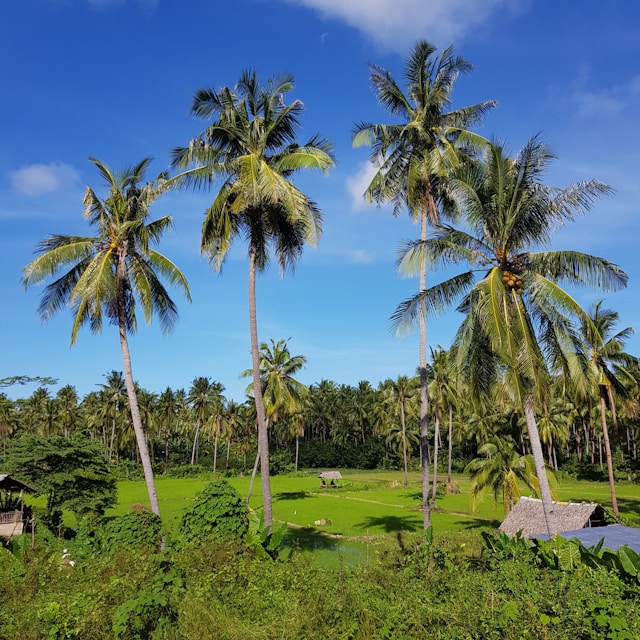
by DGR News Service | Apr 6, 2014 | Colonialism & Conquest, Defensive Violence, Mining & Drilling, NEWS, Property & Material Destruction
By Mindanao Examiner
New People’s Army rebels on Saturday raided a mining firm in the southern Philippine province of Agusan del Norte, reports said.
Reports said the rebels swooped down on Philippine Alstron Mining Company on the village of Tamamarkay in Tubay town and overpowered the security guards without firing a single shot before they torched several trucks and other heavy equipment.
The rebels also seized at least 6 shot guns and short firearms from the company’s security arsenal. There were no reports of casualties.
The raid came following threats made by the NPA on mining firms operating in the southern Philippines.
Just last month, rebel forces attacked a police base and government troops in Davao del Sur’s Matanao as punishment for their “reign of terror” against indigenous tribes and other communities opposing mining operations in the province.
Dencio Madrigal, a spokesman for the NPA-Valentine Palamine Command, said the deadly attacks were a punishment for police and military units protecting Glencore Xstrata. He accused the mining firm of exploiting nearly 100,000 hectares of ancestral lands of indigenous Lumad Blaans tribes, and peasants in the region.
Jorge Madlos, a regional rebel spokesman, also warned mining firms and fruit plantations in the region, saying military operations in Mindanao have escalated and have become more extensive with the aim to thwart the ever growing and widespread people’s protest against destructive mining operations and plantations.
Madlos said among their targets are Russell Mines and Minerals, Apex Mining Corp. and Philco in southern Mindanao; Dolefil, Del Monte and Sumifru plantations in northern Mindanao; TVI Resource Development Philippines in western Mindanao whose operations inside the ancestral domain of indigenous Subanen and Moro tribes are being opposed by villagers.
NPA and Moro rebels had previously attacked TVI Resources in Zamboanga province.
“If one recalls, more than 400 families were forced to evacuate their ancestral lands because of TVI and the ruthless military operations that ensued to protect it in Buug, Zamboanga del Sur. In order to defend the people’s human rights and general wellbeing, the NPA launched tactical offensives against TVI as well as against units of the AFP-PNP-CAFGU protecting it, such as the ambush on February 2012 that hit elements of the army intelligence group operating on the behest of TVI and the imposition of the local government to allow TVI mining operations on Subanen ancestral lands is one of the bases the NPA raided on April 9, 2012 the PNP station in Tigbao, Zamboanga del Sur,” Madlos said.
NPA rebels also intercepted a group of army soldiers who were using a borrowed truck from TVI and disarmed them in Diplahan town in Zamboanga Sibugay province two years ago. The rebels also burned the truck before releasing the soldiers.
“In view of these events, the NDFP in Mindanao calls upon the Lumad and Moro peoples, peasants and workers, religious and other sectors to further strengthen their unity and their courage to oppose the interests of imperialist mines and plantations, which are exceedingly damaging to Mindanao, to its people and to the environment. We call upon the units of the NPA in Mindanao to be ever more daring in their defense of people’s interests against the greed and rapacity of the local ruling classes and their imperialist master,” Madlos said.
TVI Resource Development Philippines has repeatedly denied all accusations against them. It recently ended its gold mining operation in Mount Canatuan in Zamboanga del Norte’s Siocon town after several years of operations and now has a gold-silver project in the town of Bayog in Zamboanga del Sur province and a nickel plant in Agusan del Norte province.
From Mindanao Examiner: http://www.mindanaoexaminer.com/news.php?news_id=20140405091630
Photo by Matthew De Zen on Unsplash
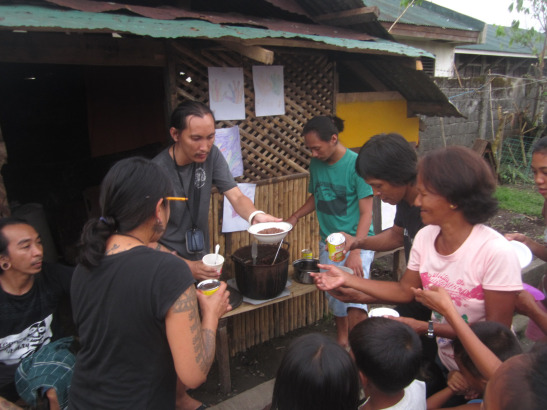
by Deep Green Resistance News Service | Dec 30, 2013 | Building Alternatives
The following account comes to us from DGR allies based in the Philippines, who recently packed up supplies and traveled to the regions of their country hardest hit by Typhoon Haiyan (called Typhoon Yolanda in the Philippines) to provide disaster relief and embody the spirit of mutual aid. You can learn more about their resistance community at http://onsiteinfoshopphilippines.wordpress.com/
Leyte Mission Two
Mobile Anarchist School volunteers and its immediate network have no time to rest; right after our first mission, we came back to Manila just to complete the requirements for “Climate Crises and Direct Action Forum” where we shared the details of our initiative in Leyte.
We able to gather resources enough to support six volunteers for 15 days action. We discussed the details of our second mission and carefully outlined our plan based on our experience.
Background
More than a month after super typhoon “Yolanda” pummeled Visayas, the National Disaster Risk Reduction and Management Council (NDRRMC) reported on Thursday morning that the death toll has slightly increased to 5,982 from 5,959 reported Wednesday. The number of people injured and missing
remained at 27,022 and 1,779, respectively.
Affected cities: 57; affected provinces: 44. Number of people/families affected: 12.191 million people/ 2.582 million families number of people displaced: 3.98 million people/ 869,742 families in evacuation centers: 21,669 families/ 93,814 people.
The number of damaged houses decreased to 1.192 million, nearly half of which were totally destroyed. To date, power outage is still being experienced in some provinces and municipalities of Mimaropa, Bicol,
Western Visayas, Central Visayas, and Eastern Visayas.
Based on the latest inspection of the National Grid Corporation of the Philippines (NGCP), a total of 1,959 transmission facilities have been damaged. Electricity has already been restored in Ormoc City, Leyte and in the municipalities of Anilao, Banate, Barotac Viejo, and Ajuy, all of which are in Iloilo.
Solar Guerrilla Autonomous Response Team – Mobile Anarchist School
As mentioned earlier, we focused our initiative in Barangay Libtong, municipality of San Miguel. There was no casualty or injury reported but the damage based on estimate of barangay captain is so extensive; in fact rice fields, coconut trees, infrastructures such as rice mills, market, tele-communications and among others are destroyed.
When we arrived there for our second mission, we see signs of very slow recovery process. The relief is scarce; families have no means to access government support to rebuild their homes. Communication is difficult, prices of basic commodities and services are still double and power restoration is far from completion.
On our first day we upgraded the capacity of our solar set-up. We installed 300 watts solar panels with 30 amperes solar control charger and two units of 12 volts batteries (3SM deep cycle 70 amperes and 2SM 50 amperes). We set-up the team to effectively carry-out charging operations, medicine and relief distribution, food not bombs and stress de-briefing activities.
Two volunteers handled the charging operations, and another was assigned in medicine distribution. The other three volunteers distributed tasks in handling food preparations.
Charging and medicine distribution operated on the daily basis (from second to eleventh day).
Barangay Central activities: we conducted art workshop, series of games, food not bombs and gifts sharing for kids and youth. Around 60 children participated the event that last for three hours.
Activities in “Iskwater”: we organized the same pattern of activities with different variations; we did not expect more than a hundred of children swarmed our event. Due to the time constraint and limitation of supplies and materials, we felt so sad to see many of them did not able to participate and did not able to get food.
We repacked our limited relief to double the number of families who will receive the goods. We focus our effort in charging and medicine distribution while the two volunteers spontaneously organized games for
kids who were always around the area of our campsite. Actually, the tandem always does this activity every afternoon during our stay except during bad weather.
We organized workshops, food not bombs, games and gift sharing to children in Pikas. Kids there are relatively small in number compare to Barangay Central and in Squatter; but they are very warm just like the places we had previously visited.
Limited supply obliged us to prioritize families without houses. We distributed relief in Iskwater, Barangay Central and Olputan areas.
These activities were carried-out in our 14-day mission including two ways travel time.
Reflections
In our ten years of operating food not bombs, free market and similar activities we are used to positive impressions from the people and communities.
School teacher is highly respectable career in many municipalities in the archipelago. A school teacher with her two daughters showed-up in one of our events all of them were wearing black shirts. Afterwards, the teacher told the reason why they are wearing black, because they respect the people who preferred to wear black color.
The community treats us good and with respect, perhaps it is natural for the people to treat us this way as long as we provide service or share supplies. On the other hand they also asked why institutions are not working efficiently and creatively to provide support. We are not supposed to be here if the government is doing its job.
In general, it’s not normal to see strange looking people providing or sharing things services essential to our daily lives without asking anything in return. Strange looking would mean heavily tattooed, body
pierced, weird hairstyles and preferring black over the other colors. Likewise, it is really odd to see these strange looking people who has no boss and privilege less but active in the front line of disaster to extend solidarity to the victims.
Our appearance raised curiosity which made people come, mingle and inter-act with us. They are expecting “formal” and “decent” people to come to help in exchange of political allegiance or spiritual favor. They are really surprise to know that strange looking people like us are here to share base on our capacity without asking anything in return.
For us this is not a heroic act, we believe that helping is a normal and common relationship in many organisms. Currently, human being is essentially guided by the idea of competition reinforce by capitalism and statism. The idea of supremacy, hierarchy, uniformity and centralized pattern distorted our values. Our relationship with nature, to our self and with others is now characterized by domination and control that eventually resulted to inequality, poverty, ignorance, patriarchy and ecological destructions.
Mutual Aid can be effective if delivered directly.






